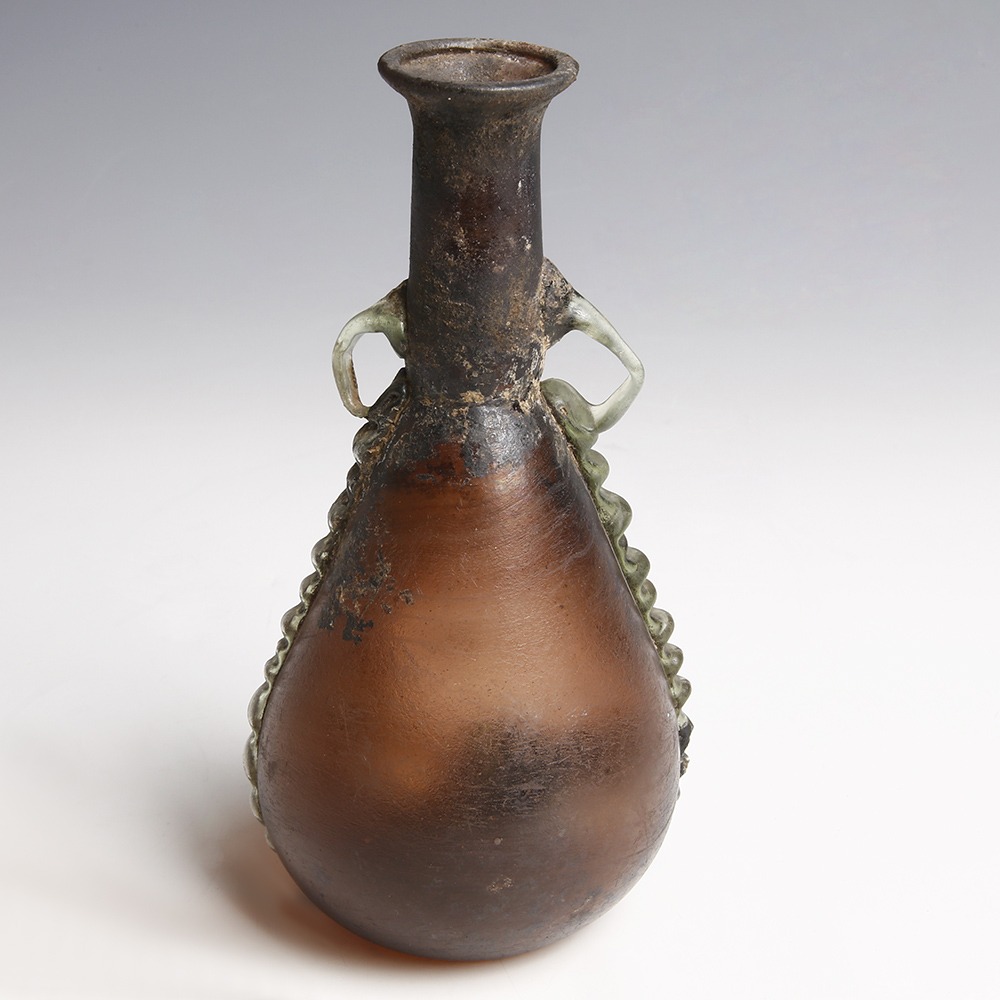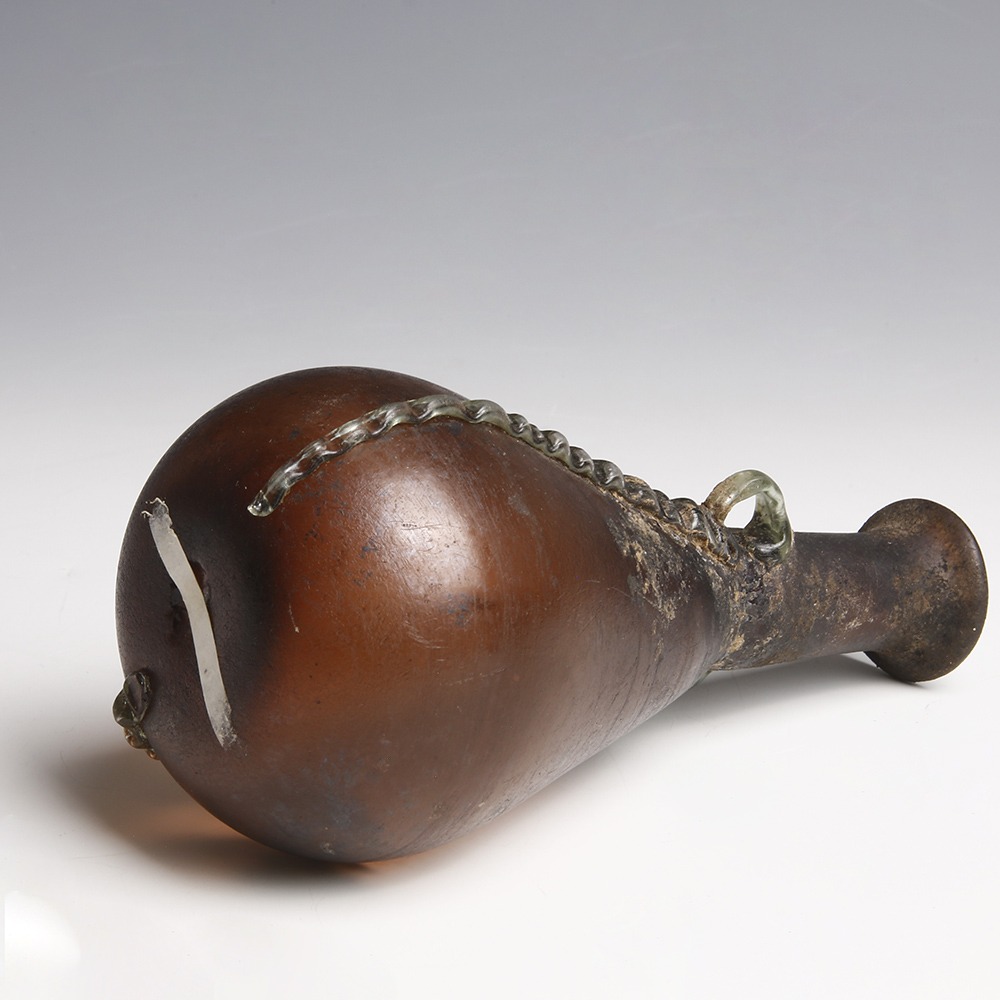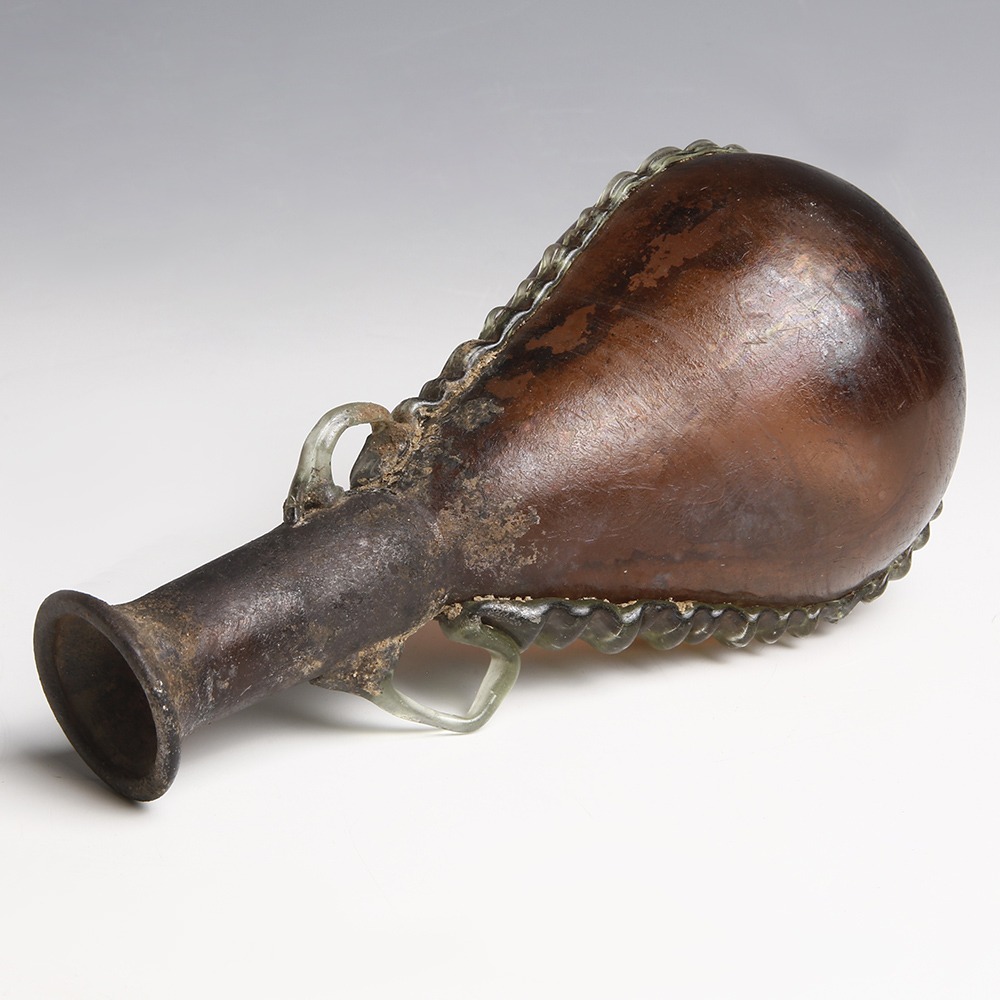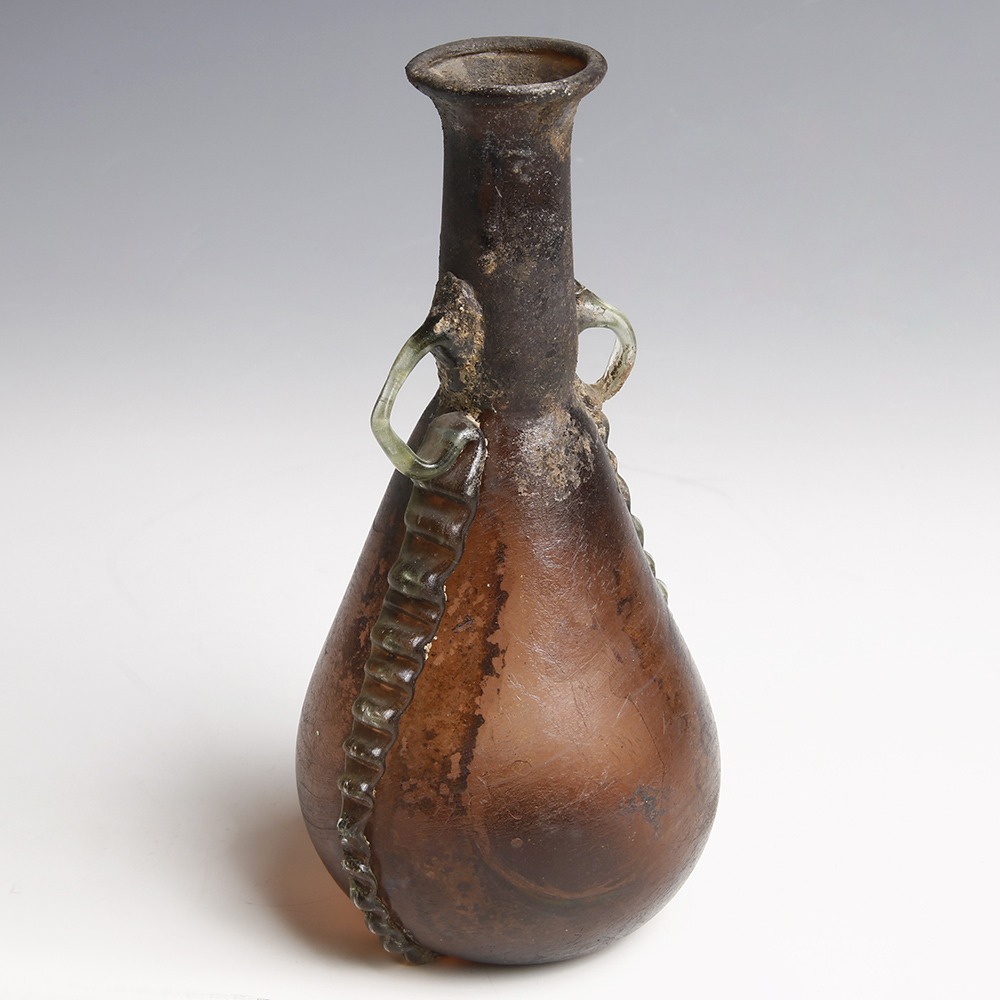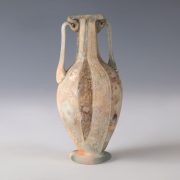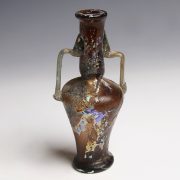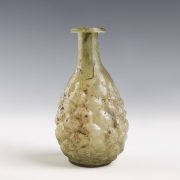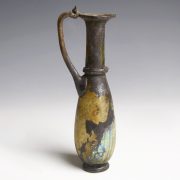Roman trade stabilised during the 4th century AD, with the reign of Constantine the Great. With Constantinople as the new capital of the Roman Empire, glass workshops in more regional areas of the Empire flourished. The trailed decoration seen here was a feature of glass commonly used in the 4th century. During the Roman Empire glass was often the preferred material for storing expensive oils, perfumes, and medicines because it was not porous. The small body and mouth allowed the user carefully to pour and control the amount of liquid dispensed. By the 1st century AD, the technique of glass-blowing had revolutionised the art of glass-making, allowing for the production of small medicine, incense, and perfume containers in new forms. These small glass bottles are found frequently at Hellenistic and Roman sites, especially in cemeteries, and the liquids which filled them would have been gathered from all corners of the expansive Roman Empire.
To find out more about Roman glass please see our relevant blog post: Collecting Roman Glass.
